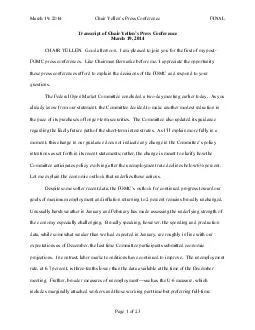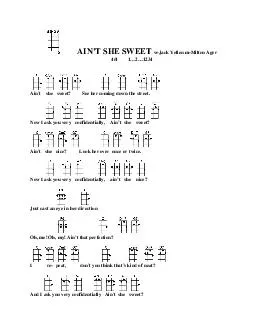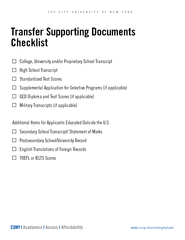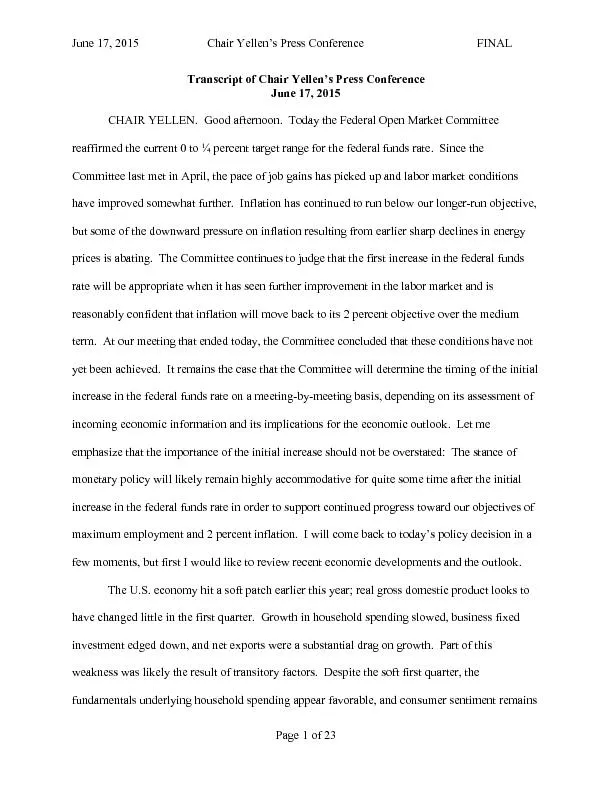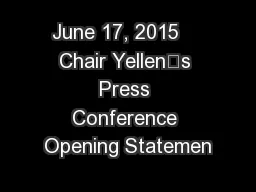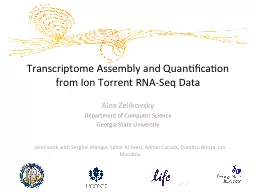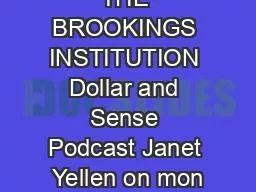PDF-March Chair Yellens Press Conference FINAL Page of Transcript of Chair Yellens Press
Author : karlyn-bohler | Published Date : 2014-10-29
Good afternoon I am pleased to join you for the first of my post FOMC press conferences Like Chairman Bernanke before me I appreciate the opportunity these press
Presentation Embed Code
Download Presentation
Download Presentation The PPT/PDF document "March Chair Yellens Press Conference ..." is the property of its rightful owner. Permission is granted to download and print the materials on this website for personal, non-commercial use only, and to display it on your personal computer provided you do not modify the materials and that you retain all copyright notices contained in the materials. By downloading content from our website, you accept the terms of this agreement.
March Chair Yellens Press Conference FINAL Page of Transcript of Chair Yellens Press: Transcript
Download Rules Of Document
"March Chair Yellens Press Conference FINAL Page of Transcript of Chair Yellens Press"The content belongs to its owner. You may download and print it for personal use, without modification, and keep all copyright notices. By downloading, you agree to these terms.
Related Documents

